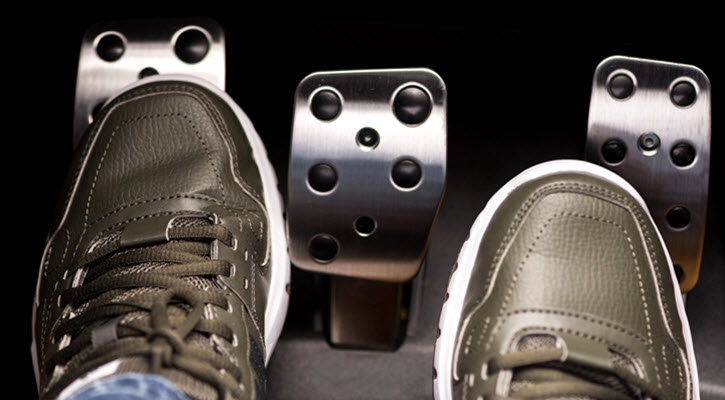
for Audi, BMW, Land Rover, Jaguar, Mercedes,
Mini, Porsche & Volkswagen Repair

for Audi, BMW, Land Rover, Jaguar, Mercedes,
Mini, Porsche & Volkswagen Repair

Your Maserati’s clutch is responsible for transferring engine power to the wheels, allowing you to you to control your car safely. When the clutch pedal is pressed, the clutch momentarily disengages your engine’s connection to the wheels, which is what allows a change in gears to successfully occur. When the clutch pedal is lifted, the flywheel (part of the clutch assembly) is able to connect to the engine shaft, which allows the wheels and the engine to reconnect.
As you can see, the clutch has a vital role to play. In this article we’ll be exploring how you can tell if this part has developed an issue and how you can best resolve the problem.
As your clutch is an assembly of connected parts, failure can occur in a variety of different ways with each type of failure having its own set of symptoms. One of the most common symptoms experienced by Maserati drivers include gear slippage, which can be noticed when driving as your car will rev expectedly and may be sluggish to accelerate. Because the clutch works closely with the engine, a failure can also result in an increase of fuel consumption which can get quite costly pretty quickly.
You may find that using the clutch becomes a pain, either because you end up having to stamp the pedal to get a response or because the clutch vibrates or feels stuck. You may even hear a vibrating noise when you press the pedal. A Masterati with clutch problems will also likely struggle to change gears, with this issue getting more and more severe as time progresses.
There are 3 simple ways that you can check on the status of your clutch at home. Firstly, press your Maserati’s clutch pedal. If you find depressing the pedal very easy with no resistance, then you may have your first indicator of trouble. Secondly, when driving your Maserati, try accelerating in 3rd or 4th gear. If you hear your engine note rise, but your vehicle doesn’t accelerate in response, then you have a more clear sign of clutch problems. Lastly, start up your Maserati and gently shift to third gear as you apply the clutch. Slowly lift your foot from the clutch. Your car should stall in response to this. If it does not, then you’re dealing with a clutch that is slipping.
It is important to note that while DIY clutch repair may be tempting for those with prior mechanical knowledge, it is not suitable to novices or those without experience. Clutch repair requires temporarily detaching multiple parts and electrical wiring, which can be a recipe for disaster in inexperienced hands.
Not to mention, your clutch has an important role to play in regards to the performance and safety of your Maserati, so it’s really not worth the risk of accidentally making your car unsafe. There’s also the risk of potentially causing more damage to your car over the course of the DIY repair, meaning you will not only be out your precious time, but also more money as you must now get those issues repaired as well.
Because of the complexity and importance of the part, it’s vital that you trust your clutch repair to the professionals. At European Service Center, we’re happy to get your clutch repair done in a timely manner at a price that won’t break the bank.

You can rely on our team of experts and European Service Center to correctly replace your clutch so you can get back to what you really want to be doing: driving your Maserati.
We have 8 locations across Texas and Georgia, so if you’re in or near Dallas, Houston, or Planto, TX, or Alpharetta, Chamblee, Cumming, Norcross, Dunwoody, Buckhead, Roswell, Atlanta, GA, we’re only a short drive away. We are a family run business and offer a 3-year/36,000 mile warranty as standard, meaning that you can trust us to look after your Maserati and return it to you working better than ever before. Call or stop by today to make an appointment!